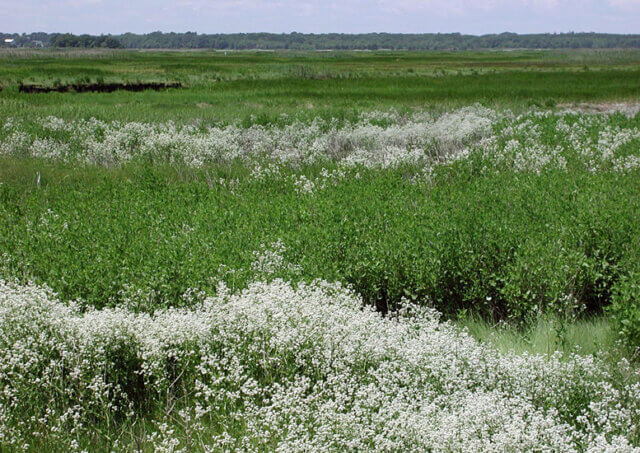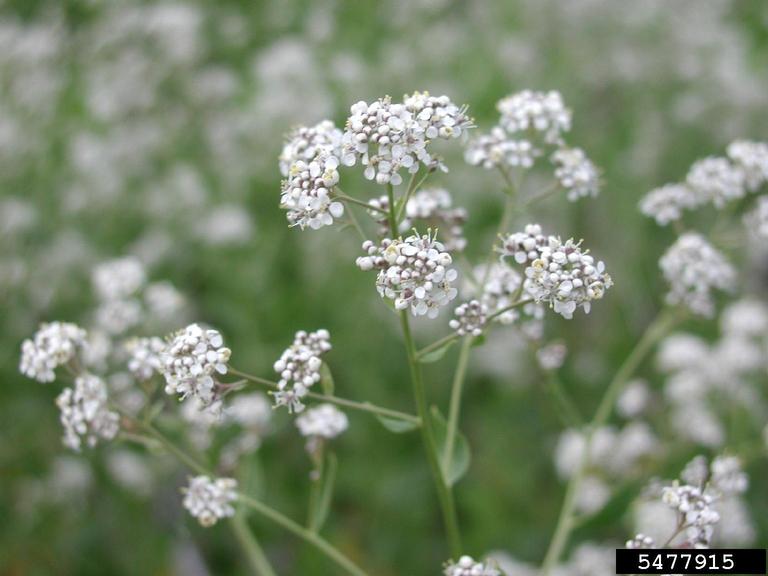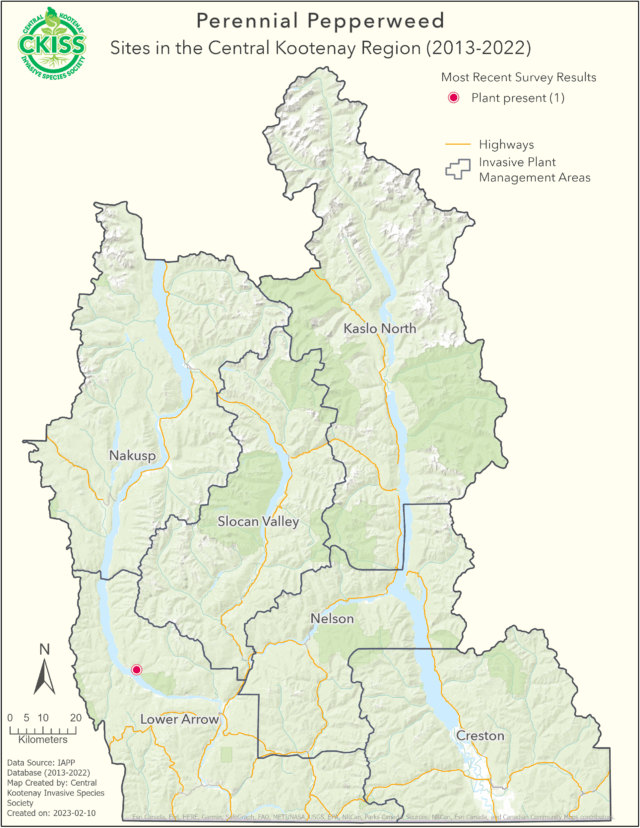Lepidium latifolium
Description
- Perennial herb that grows up to 2 m tall
- Multiple waxy stems are greenish-grey, have a woody base, and may have red spots
- Leaves are smooth, lance-shaped, alternate, grey-green, have white mid-veins, and become reduced in size up the plant
- Rosettes are oval-oblong in shape with smooth or jagged edges
- Flowers are white clusters of four petals
- Fruits are small, round-oval pods, each containing two seeds
- Prefers salty soils, but grows in many habitats and soil conditions
(e.g., agricultural areas, rangelands, roadsides, and riparian areas)
Introduction and spread
- Native to southeastern Europe and southwestern Asia
- Likely introduced to North America in the 1930s mixed into a shipment of sugar beet seeds
- In BC, it is known to occur in the East Kootenay, Thompson-Nicola, Cariboo, and Vancouver regions
- Reproduces by seeds, root fragments, and rhizomes
- Roots can be dormant for several years
- Spreads mainly by rhizomes, water currents, animal fur, contaminated seed mixes/forage/soil/straw, vehicles and equipment, and horticulture
Consequences of invasion

- Forms dense monocultures quickly, reducing native plant diversity
- Increases soil salinity, inhibiting the growth of many other plants
- Threatens riparian areas, rangelands, croplands, pastures, and sensitive habitats such as marshlands
- Reduces crop yields and pasture productivity
- Reduces forage quality for livestock
- May make livestock ill when ingested
- Reduces nesting habitat when semi-woody stems accumulate
Status in the CKISS region
- Perennial pepperweed is classified as Prevent on the CKISS Annual Priority List.
- Perennial pepperweed is also classified as Provincial EDRR by the provincial government, and is managed by the Province. Please report any sightings immediately to the Province.
- It is currently not known to occur in the CKISS region.
- To learn more about how CKISS classifies and manages invasive species, see our Invasive Species Priority Lists page.
Integrated pest management options
Prevention
- Do not plant this species. Learn about Grow Me Instead for native plant alternatives, and become PlantWise.
- Minimize soil disturbance and promptly revegetate bare, disturbed soils.
- Use hay and seed mixtures that are certified weed-free.
- Do not move contaminated soils to a new area.
- Clean clothing, boots, gear, machinery, and vehicles from soils and plant materials before entering/leaving an area.
Mechanical control
- Hand-pull or dig small infestations, removing as much of the roots as possible.
- Mow at flower bud stage to prevent seed set.
- Properly dispose of all plant parts in a bag for burial at a landfill.
- These methods will require repeated treatments to prevent seed spread.
Chemical control
- Has shown effectiveness when applied at the flowering stage and with other control methods (e.g., mowing).
- Foliar applications have shown to be effective.
- Post-emergent herbicides have been effective with repeat applications over several years.
Cultural control
- Grazing by sheep and goats in the growing season may suppress plant growth, but should be combined with other control methods.
Biological control
- There are currently no known biocontrol agents for this species in BC.
Additional resources
- Perennial pepperweed | Invasive Species Council of BC
- Perennial pepperweed | Provincial Invasive Species Alert
- Perennial pepperweed | SSISC
- Perennial pepperweed | King County








